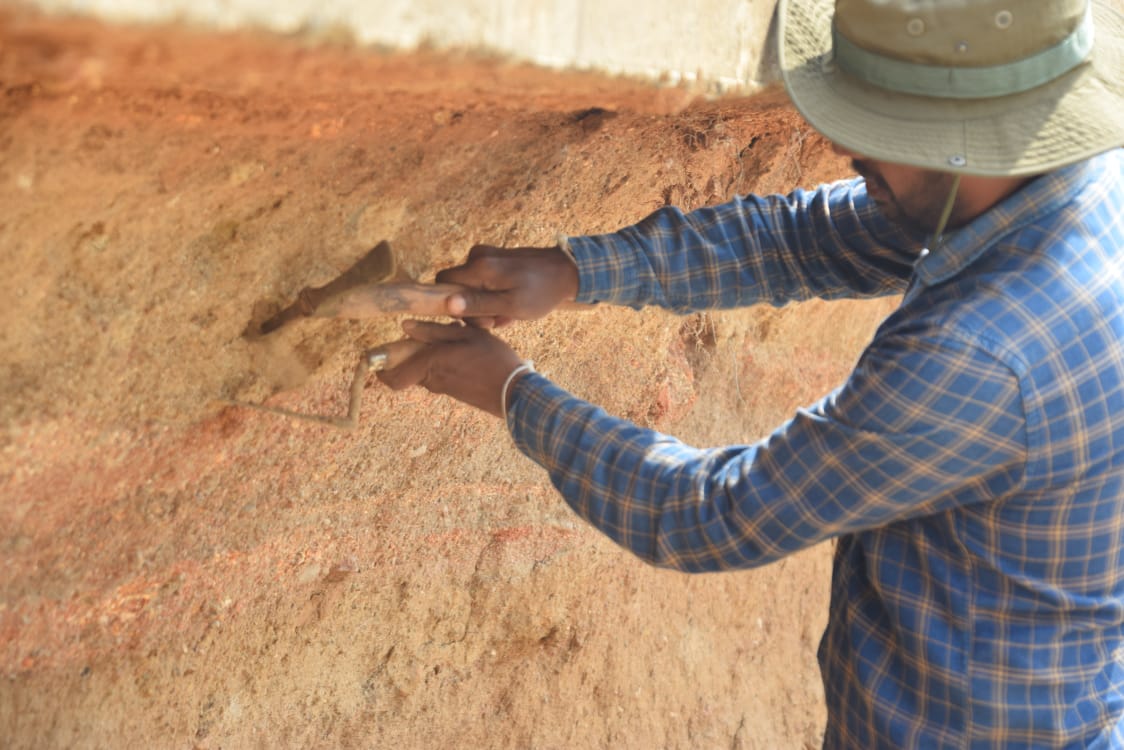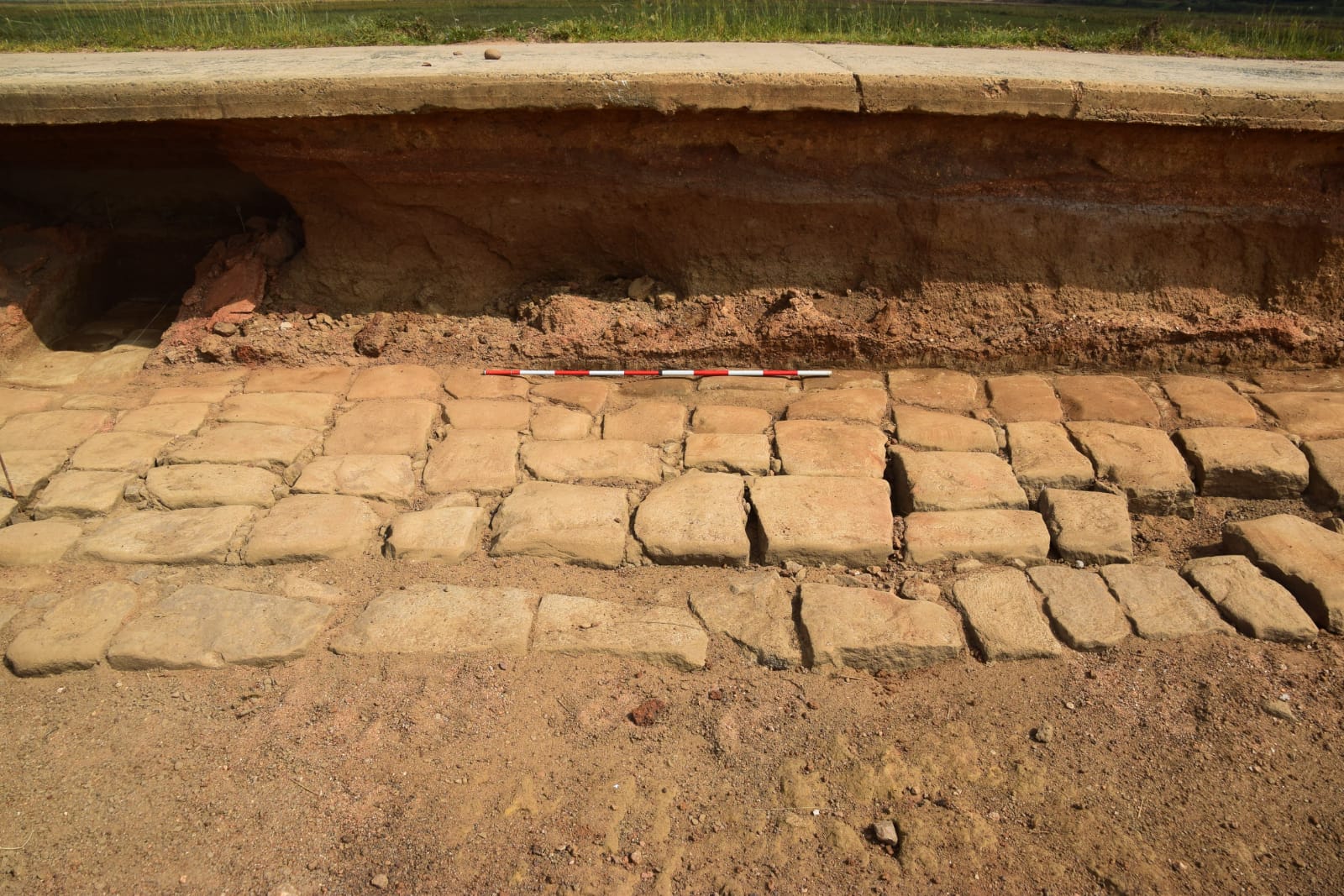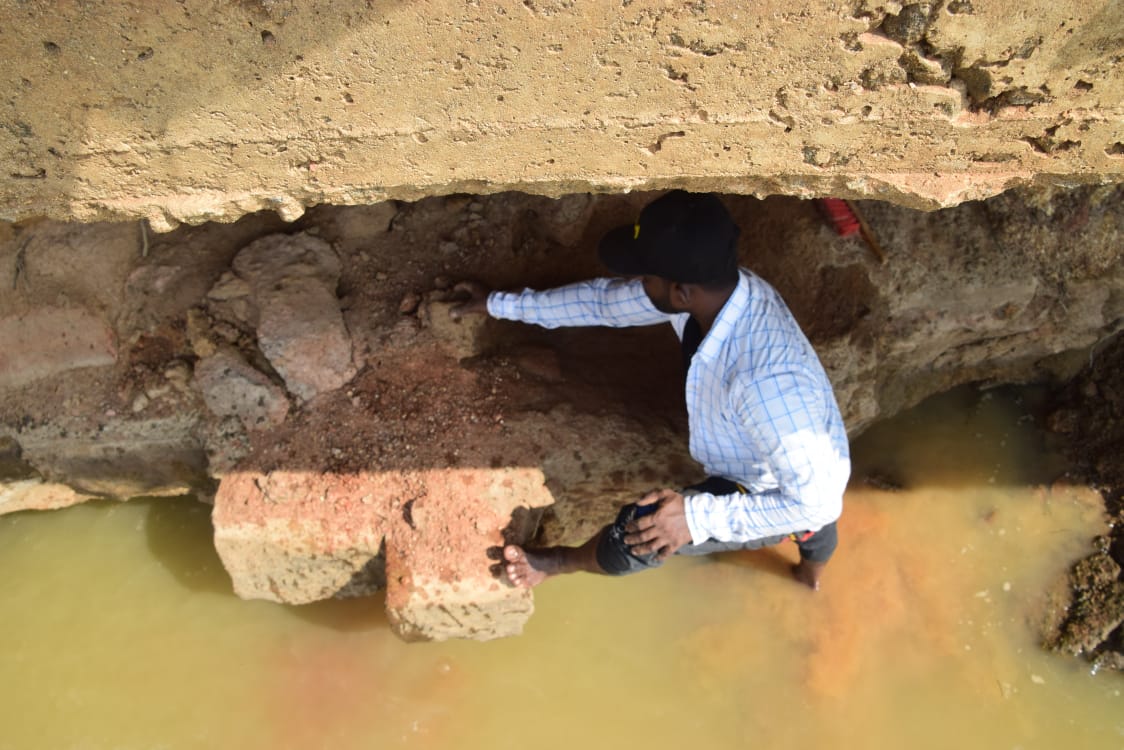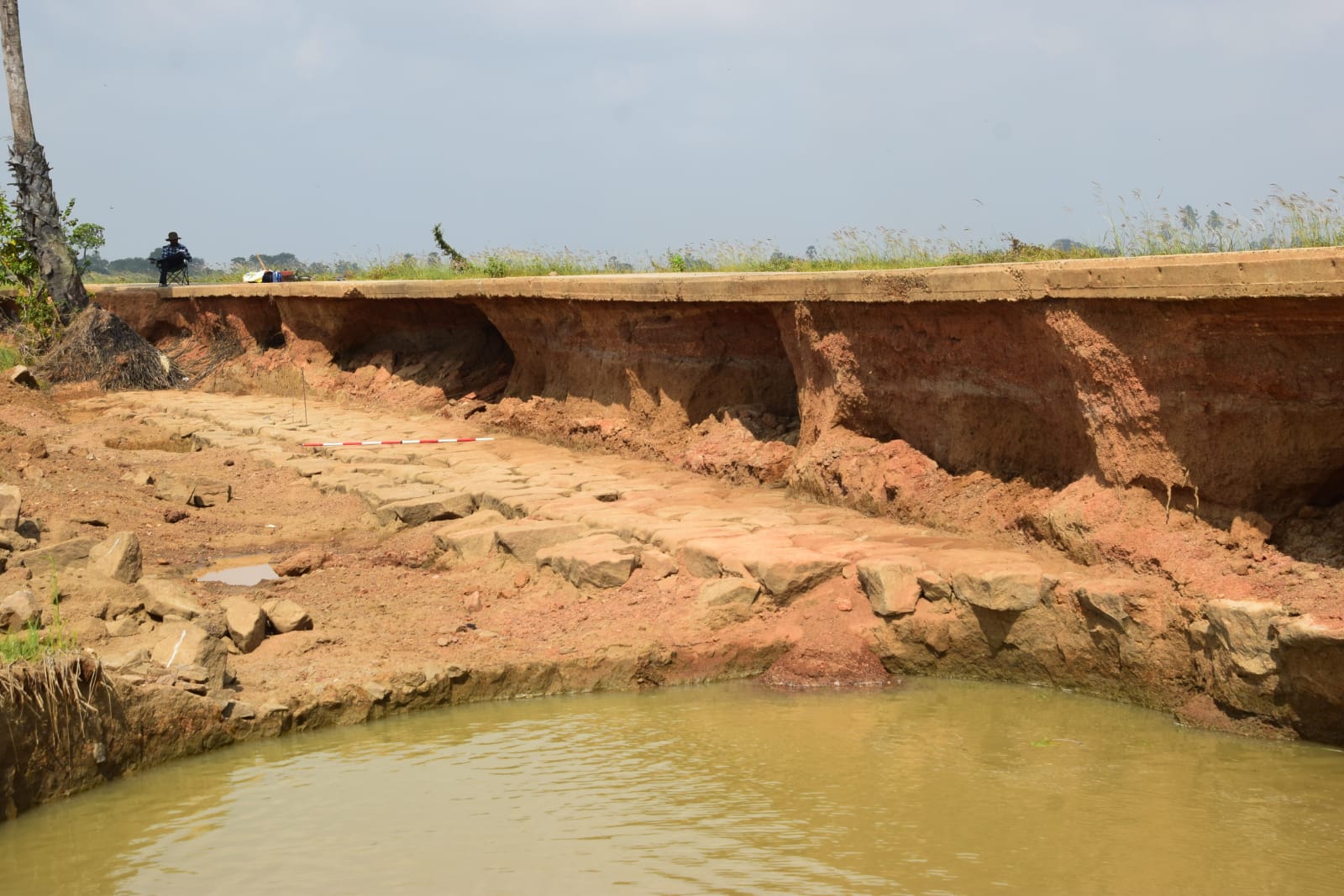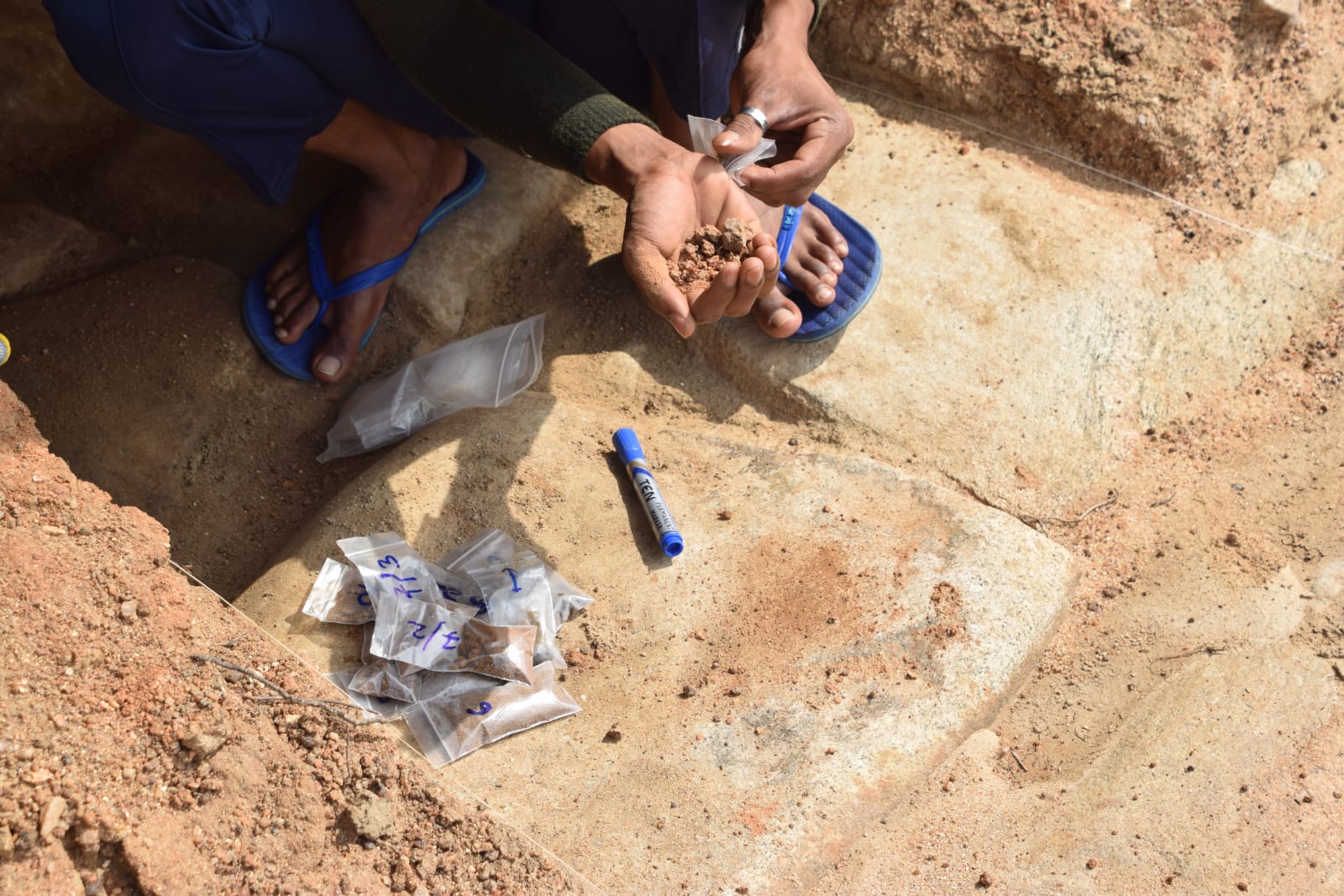In the wake of the recent flood disaster that ravaged the Ampara district, a remarkable discovery has emerged from the debris. The Dighawapia-Oluwil main road, severely affected by the overflow of Gal Oya, revealed a hidden archaeological fact: a stone slab road structure concealed beneath the modern thoroughfare.
Located on the left-hand side of the Varipatanechna intersection along the Siyambalanduwa road from Ampara city, this unexpected find sheds light on the region's rich historical heritage. Stretching from Dighawapi Road to Dighawapiya and onwards to Dighawapi Oluvil Road, the site, situated approximately six kilometres into the village of Palelkadu under the domain of the village official, Oluvil No. 01, has become a focal point of archaeological interest.
The primary objective of the excavation project was to archaeologically identify the stone slab road, which emerged from the collapse of the Dighawapiya-Oluvil road during the Gal Oya overflow. Additionally, the project aimed to understand, identify, and document existing artefacts impacted by the road's development.
Under the expert guidance of the Excavation Division of the Department of Archaeology of Sri Lanka and Ampara/Batticaloa Assistant Director D.S.A. Munasinghe, a comprehensive research excavation was conducted at the site. Led by Project Officer S.A. Prasanna and supervised by Museum Assistant Mr. Tirone Ananda, the excavation team meticulously unearthed valuable insights into the region's ancient road systems.
Among the discoveries was a stone stream, located approximately 150 meters from the excavation site, designed to divert effluent water through a stone lining to low-ground drains. This innovative engineering solution, observed through the movement of rocks in the blanket, highlights the adaptability and ingenuity of ancient infrastructure.
Furthermore, the excavation yielded a wealth of information regarding the colonial-era road systems, including the macadamia system and the process of ancient road construction. Interviews conducted with local residents provided valuable context, illuminating the historical significance of the site.
The Regional Archaeology Office extends gratitude to the Ampara District Secretary, Akkarapattuwa Divisional Secretary, and Irrigation Engineer for their unwavering support throughout the excavation process.
As the excavation continues to unravel the mysteries of the past, it not only enriches our understanding of Sri Lanka's cultural heritage but also underscores the resilience and innovation of ancient civilizations in the face of adversity.




